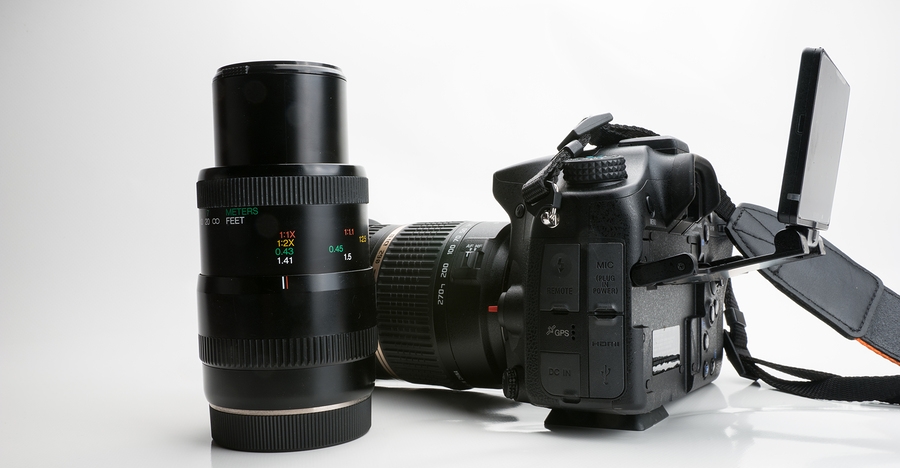This is an age-old question and it seems there will always be those who say “it’s not the camera, it’s you”.
Of course there are also those who firmly believe an upgrade is necessary, even if you just got the latest and finest camera body a year ago. Both groups are right, and both are wrong. You yourself are the only one who can decide what’s best for you – if you’re unsure, you should consider these things photographer Harry Guinness writes about over at Envato Tuts+.
The key to understanding when you need a new camera is understanding what a more expensive camera actually does better than an entry level camera. Both take pictures when you press the shutter button! It’s the other bits where things can be different. Perhaps the best way to break it down is into five areas: bigger and better sensors, faster processors, more accurate autofocus, higher build quality, and more customisability and control.
Bigger Sensors
The most obvious, though not necessarily the most important, difference between consumer and professional cameras is normally the sensor. Every major manufacturer’s entry level cameras uses a smaller “crop” sensor while professional bodies, with the exception of specialty cameras like the Canon 7D, use a full-frame sensor.
A full-frame sensor, which matches the size of 35mm film, has a couple of advantages over crop sensors. Because it’s larger, each photo-site on a full-frame sensor can be bigger, which creates higher quality images and better low light performance. There’s a growing trend to cram on as many photo-sites as possible on to the sensor; you could never fit the Canon 5DS’s 50.6 megapixels on a crop sensor. Full-frame sensors also give a shallow depth of field with a wider field of view, which is a benefit in many ways.
Faster Processors
A camera’s processor is responsible for how fast it can shoot images and how it handles higher ISOs. Higher-end cameras have better processors, which means they can shoot more images in a row and better record better low light images. For news, sports and wedding photographers, for example, these two things are key.
Faster, More Accurate Autofocus
Professional cameras also have faster, more accurate autofocus with a greater number of “points” to choose from. Again, this is something that doesn’t matter in perfect circumstances, but when you are shooting unpredictable or fast moving objects having a camera that can keep the subject locked down is incredibly important.
Tougher Materials
One of the easiest way for manufacturers to save money on entry level cameras is to use cheaper materials. A metal body just costs more to make than a plastic body. Metal bodies, however, are much more durable. They can also be weather sealed so the camera won’t break if it gets rained on. If you’re going to look after your camera, this won’t make much of a difference to you. It’s a precious possession, you’re not going to drop it! But if you are planning to take your camera into difficult situations the more durable it is the better.
Easier Operation
Finally, one of the often forgotten areas where professional cameras leave consumer cameras on the floor is customisability, ergonomics and ease of control. My Canon 650D has one dial that controls both aperture and shutter speed. You have to hold down a button to toggle between the two settings. My 5D III on the other hand has two separate dials, one for each setting. This might sound like a small thing but it makes changing settings far faster and easier to do without looking. The 5D III also has three custom modes where I can save settings. This means you can quickly swap between a street shooting mode and a portrait or sport mode. For hobbyists, this level of control just isn’t necessary. For professionals, however, it can be the difference between a missed shot and a $10,000 payday, or between a cramped hand and a 14-hour workday.
Going “Pro”
Are you missing shots? If your technique is sound but you still feel like your camera is working against you, well, it might be time to upgrade.
A couple obvious examples where cameras are a limiting factor are sports and wildlife photography. Here, a better camera body will make more difference than better glass. At 300 mm, even an aperture of f/4 creates plenty of background separation. Instead, you need a camera that can track fast moving subjects and shoot enough frames quickly to give you your best chance of getting a great image. If you’re serious about either field, consider upgrading your camera body.
For me, the biggest reason I invested in a professional camera was the durability. If you’re taking your camera skiing or mountain climbing, it’s going to fall or get wet at some point. All the other features are nice when you’ve got them, but having a camera I don’t have to worry about when I’m outdoors? That was the decider. If you spend a lot of time hiking, rock climbing, sailing or otherwise doing things where your camera could get kicked, dropped, soaked or take any kind of abuse, a more durable body could save you quite a bit in replacement costs.
Another area where all the extra features of professional bodies come in handy is low light photography. The larger sensor, faster processor and better autofocus just make them flat out better for low light than consumer cameras. Night is one of the few times you will see a marked difference between images shot with consumer and professional cameras. It doesn’t mean you have to rush out and upgrade, but if you’re trying to take your photography to the next level it might help.
Read the full article over at Envato Tuts+.
Source: Envato Tuts+

